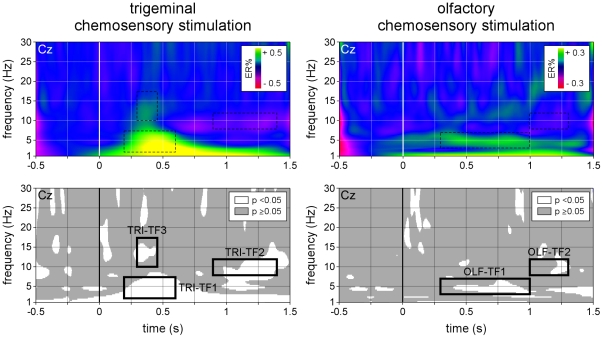Figure 5. Time-frequency representation of the non-phase locked EEG responses to trigeminal and olfactory chemosensory stimulation (CWT-SINGLE).
Non-phase locked EEG responses were identified by performing across-trial averaging in the time-frequency domain, a procedure which enhances time-locked EEG responses regardless of whether they are phase-locked to the onset of the stimulus. The upper panels show the group-level average time-frequency maps of oscillation amplitude (group-level average; electrode Cz vs. A1A2), expressed as percentage increase or decrease relative to baseline (−0.4 to −0.1 s) (ER%). Note that, in addition to the phase-locked EEG response (TRI-TF1), trigeminal stimulation also elicits event-related desynchronization in the alpha-band (TRI-TF2), as well as a transient and early increase of signal amplitude centered around 10–15 Hz (TRI-TF3). Also note that olfactory stimulation elicits a long-lasting non phase-locked increase of signal amplitude centered around 5 Hz (OLF-TF1), possibly followed by event-related desynchronization in the alpha-band (OLF-TF2). The lower panels highlight areas of the time-frequency matrix where signal amplitude deviated significantly from baseline (one-sample t-test).

